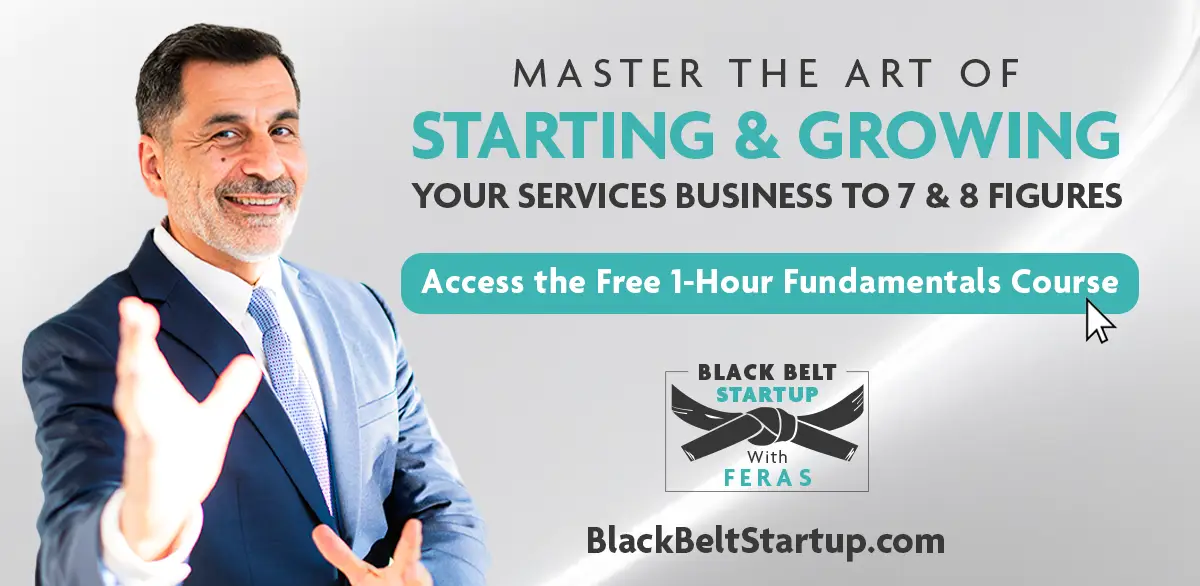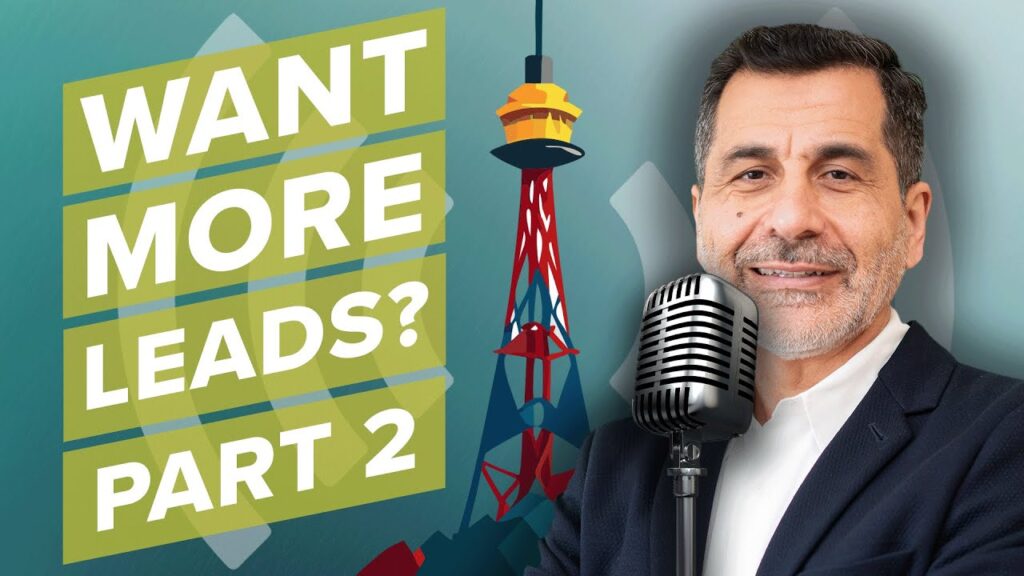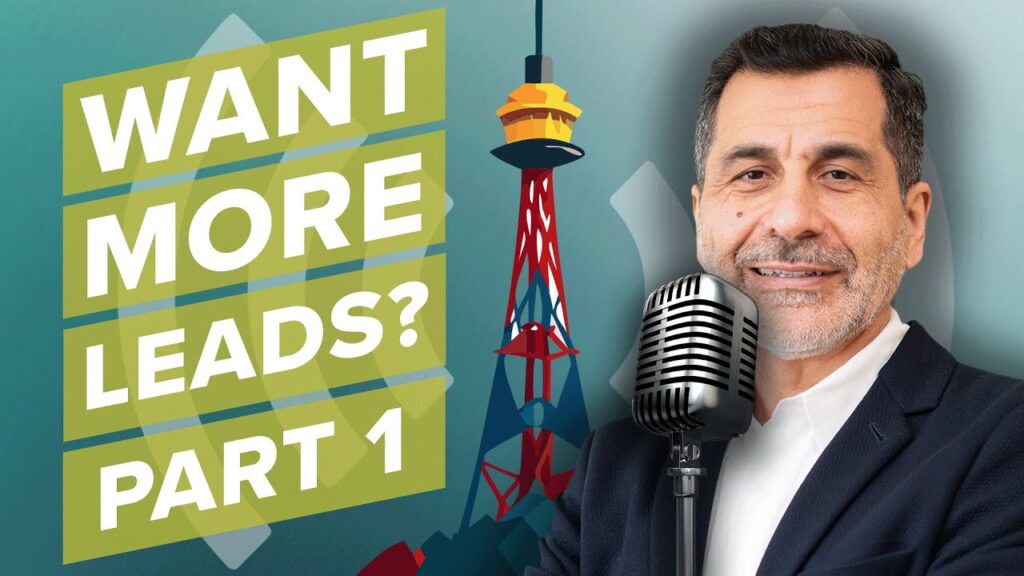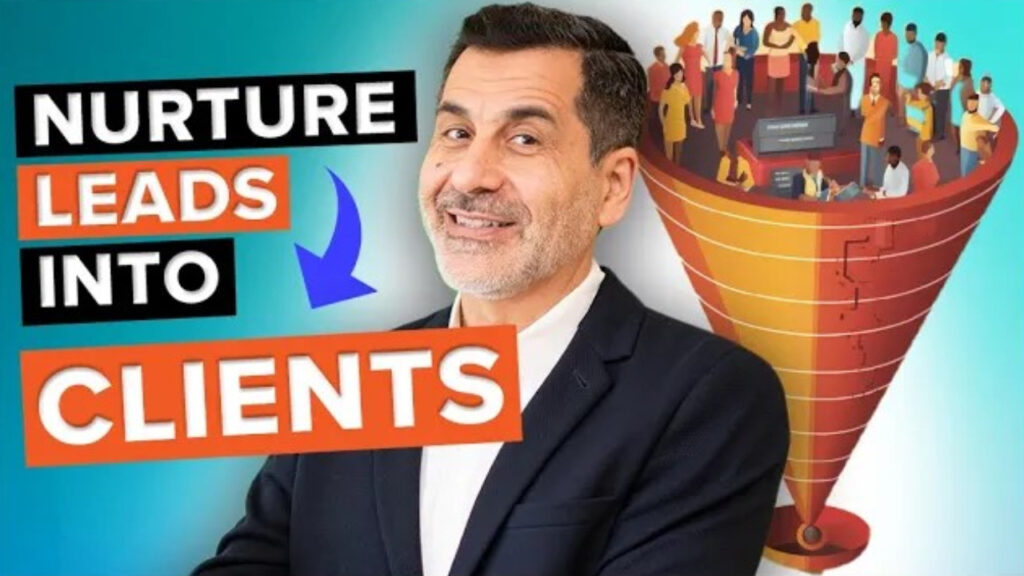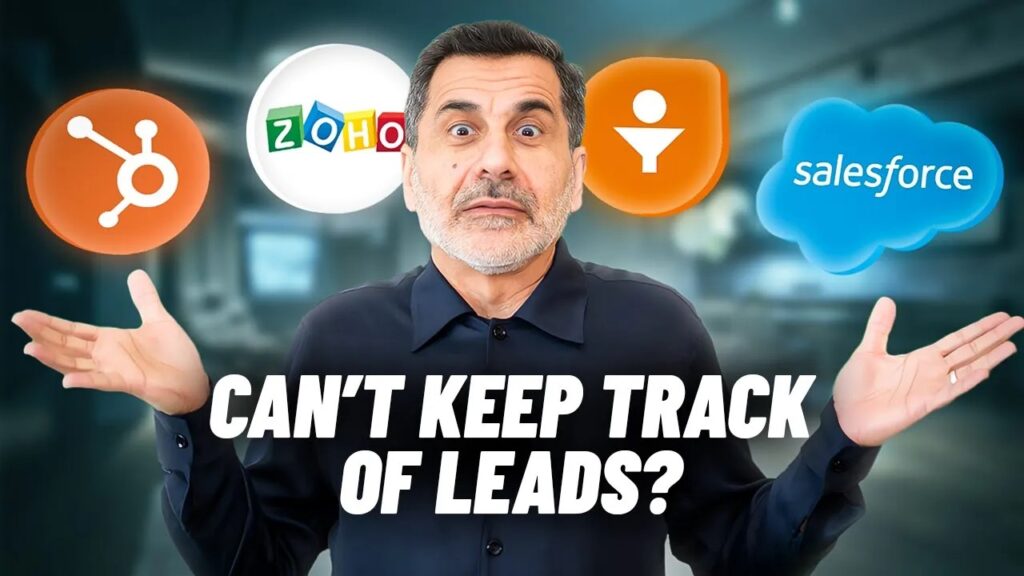Mastering Your Sales Funnel: The Ultimate Guide to Sales Funnels for Service Businesses

“We see our customers as invited guests to a party, and we are the hosts. It’s our job every day to make every important aspect of the customer experience a little bit better.”
– Jeff Bezos, Amazon.com Founder
The success of your business boils down to you effectively managing your leads and converting them into paying clients.
Most business owners fail to nurture leads because they don’t leverage the power of sales funnels for service businesses or understand how sales funnels can transform their company. In this article, I will show you how to set up an effective sales funnel while sharing with you insights from real-life client engagements.
You can also download our Sales Funnel Template Checklist as a quick reference.
Watch the video where I cover this topic:
Defining a Sales Funnel for Service and Consulting Businesses
At its essence, a sales funnel is just a framework that maps out your client’s buying journey so that you can have the right interaction with them at each step of their buying journey.
It works whether you’re selling a product or service. However, like all frameworks, you need to adapt it to suit your product, service, and client type, and you need stay on top of it, updating it consistently. And as you nurture leads through the stages of the funnel, use your best judgment to see which stages apply to your particular client. In other words, fit the framework to the client and not the other way around.
The structure of the sales funnel I’ll share with you here helped us grow from our first client in 2003 – the restaurant around the corner – all the way to working with clients like Google, Salesforce, the US government, and other highly recognized brands.
This sales funnel helped us build our selling muscle and it can help you build yours.
Understanding the Sales Funnel for Consultants
Let’s outline the differences between a marketing funnel and a sales funnel.
In marketing, the marketing funnel represents the efforts that result in generated leads, while a sales funnel begins after lead generation has already occurred – you already have the lead. The marketing version usually consists of a landing page that encourages the visitor to sign up for your email marketing list or a number to call. Once they’re a lead, they enter the sales funnel.
The Awareness stage focuses on enhancing your lead’s understanding of your services.
A sales funnel is a crucial process that guides leads through different stages, turning them from lead into paying clients. According to Salesforce, this process of finding and nurturing leads is often overlooked by most companies with 68% of businesses neglecting to identify or measure a sales funnel. The same survey shows that 79% of marketing leads are never converted into sales.
But when you take the time to identify and track the results of your sales funnel, including how many users enter it, what the conversion rate is, the value of those conversions, and more, you can better identify issues in the nurturing and converting process.
The sales funnel is like a recipe for success in the services space. In this post, we’re outlining five stages, while others might outline 4 or 6. Don’t let these stages confuse or frustrate you. The stages flow the same no matter how you choose to identify them. The stages are just an attempt to describe the client purchasing journey.
The important part is understanding the key ingredients of this recipe: leads, conversions, and the process to keep the prospect engaged. The leads in your sales pipeline might not even follow the funnel stages linearly, but knowing what to do at each stage is crucial.
As with cooking or baking, if you follow the same recipe with only a few instructions or a version with more detailed steps, it doesn’t matter. The result will be the same. The need for you, the recipe reader, to understand kitchen fundamentals remains the same.
By focusing on mastering the fundamental sales techniques, you’ll be in a position to custom-tailor your “sales recipe” to suit the specific needs of your sales process and business.
The 5 Stages of a Service Business Sales Funnel
A quick overview. The 5 stages of a funnel look like this:
- Awareness: Where the prospect discovers your business and one-to-one communication begins.
- Education: When the prospect learns more about you and your services.
- Evaluation: When the prospect evaluates you compared to other options they are considering to solve their problem.
- Negotiation: When the prospect is basically ready to move forward on a deal but needs to work out some of the specific terms.
- Sale: The close and conversion to a client.
Let’s dig deeper.
Stage 1: Awareness of Your Service Business
The initial stage of a sales funnel is awareness, where direct interactions between potential customers and you or your sales team take place. It involves broadening and deepening your lead’s knowledge of your services.
Let me first clarify the awareness stage by comparing it with a marketing funnel. (To learn more about marketing funnels, watch this video).
Awareness phase in the sales funnel awareness involves direct interactions between the lead and your sales team. Contrast this with the indirect (and often automated) interactions in marketing processes.
At the Awareness stage and throughout the sales funnel, remember your role as a salesperson is to put yourself in the prospect’s shoes and offer services that demonstrate that you understand their pain points. Until a prospect feels valued and understood, they will not have confidence to buy.
Awareness Stage Example
Let me share about a time when I myself was the lead. It all began when my aging father moved to be closer to our family.
It soon became apparent that my father required specialized medical attention during the night. A thoughtful friend recommended an elderly in-home care service. Intrigued but uncertain, I delved into online research. The stakes were high; after all, it was my father, a man I loved and treasured, who needed the care.
Navigating the vast internet landscape, I explored the websites of three companies in my local area and reached out to all of them. Engaging with their representatives, who also happened to be the owners, I started gaining insights into these companies.
Two companies had short videos on their websites offering a comprehensive overview of their services. I was gaining awareness of all 3, but 2 already stood out because of their content.
Note that the content on your website can either draw a lead closer to you or push them away. In the realm of marketing and sales, quality material holds immense significance. It goes beyond mere information. Quality material can:
- Demonstrate that you understand a lead’s challenges
- Position you as an authority
- Drive a lead’s interest
Throughout my experiences, I’ve seen over and over the critical alignment of sharing the right piece of content at the right time in the sales process. There’s no substitute for this strategic approach.
Steps to Take in the Awareness Stage
Let’s review the actions that you should take in the Awareness stage:
- If you’ve not had direct contact with the lead, reach out to them to schedule a call.
- Provide educational material in a variety of formats (service descriptions, blog posts, short videos, case studies, etc.) that speak to the needs of the lead and other potential decision-makers.
- Begin the process of qualification, meaning your assessment of a lead’s seriousness and likelihood of becoming a paid customer.
- Appropriately, ask them qualifying questions:
- Are they looking to buy the service now or later?
- Do they have a budget?
- Are they speaking with your competitors?
These questions will help you determine if you should continue to nurture the lead.
Awareness Stage Outcomes
At the heart of the awareness stage is making the initial assessment of how qualified the lead might be. Signs that they may not be qualified include:
- Not responding to your communications.
- A vague or dispassionate demeanor when discussing their needs.
- Indications suggesting an unavailable budget both now and in the foreseeable future.
Conversely, some signs suggest a lead is promising:
- Urgent need for your service, such as a lead for an accountant or tax preparer reaching out a week before a tax deadline.
- Offering a service that directly addresses a regulatory compliance issue, a top priority for the client’s organization.
- In B2B services: the presence of a budget that must be utilized before the imminent close of a fiscal year or quarter.
Whether the lead is scorching hot, chillingly cold, or somewhere in between, it’s crucial to meticulously document your observations in your CRM system.
A CRM, or Client Relationship Management system can be as simple as a spreadsheet or as complex as an enterprise-level software system with multiple integrations. CRM platforms include Salesforce and HubSpot. There are a variety of digital solutions with low- or no-cost options that scale along with your needs. For more information on CRMs and how to use them, watch this video.
Stage 2: Education – Deepening Engagement in the Education Stage
A lead progresses from the first stage, Awareness, to the second stage, education. This progression marks the movement down the funnel. While some learning occurred during the awareness phase, you’re delving deeper into engagement by providing even more tailored education.
Your focus at this stage isn’t on pinpointing exact budgets, negotiating, or sealing the deal. Rather, it’s about further enlightening your potential client on how your services can effectively address their pain points.
During the Education phase, the marketing materials mentioned earlier maintain their importance, complemented by more personalized communications. For instance, you might share a client success story with the lead, accompanied by additional insights on how you could replicate such success for them.
Note that the Education phase serves as another opportunity to assess the suitability of your services for the prospect. If you sense a mismatch or harbor serious reservations, it’s wise not to invest more time in closing the deal. A poor client fit can frustrate both you and the client. When you can, redirect poor-fit leads to other providers who may better cater to their needs.
Education Stage of a Sales Funnel Example
To paint a picture of the Education phase, let’s stick with my own journey as a prospect considering in-home services for my father.
Following my initial exchanges with the company reps, one of them sent me a comprehensive list of FAQs covering diverse scenarios, including medical emergencies and contractual considerations.
Browsing through the FAQs, I got the sense they had been in the game for quite a while and knew their stuff. Their website also neatly outlined the specialized services they offered – companion care, post-surgery care, and the like – a very helpful resource.
Now, one of the other businesses took a straightforward approach on their website as well. They laid out pricing details for weekdays versus weeknights, mornings versus evenings, and even threw in their cancellation policy.
Another business had an online tool to figure out, “Is in-home care right for your loved one?” This assessment was a game changer for me as a lead, helping me make well-informed decisions. And take note: for the business owner, this assessment was also a handy filter, weeding out the users that weren’t the right fit.
Steps To Take in the Education Stage
The steps in this stage extend the lead education begun in the awareness phase. When engaging with the lead, pose open-ended questions to grasp their genuine concerns or objections. Always keep this in mind: it’s about them, not you.
For consultancies or services involving software, web platforms, or physical products or systems, schedule a demo online or in person. Follow up with targeted educational material.
Avoid lengthy and generic content; it’s not as effective as addressing a specific concern or question raised by the lead. If they may be doubting your capability (thinking you’re too small or lacking experience), share a success story showcasing how you’ve helped others in similar situations.
Throughout every phase of the sales funnel, especially in this stage, a prompt response to any inquiry is crucial. Keep the communication swift and dynamic. No lagging allowed!
Education Stage Outcomes
As outcomes for the Education stage of the sales funnel:
- Your lead should gain a deeper understanding of your services.
- You should delve deeper into your lead’s requirements.
The natural next question becomes: Is it time to send them a proposal?
You could send a proposal now if your service is straightforward and doesn’t demand extensive customization, allowing for a quick boilerplate proposal.
However, if significant customization is required, hold off on investing extra time until the lead shows a higher sales probability in the Evaluation stage.
And remember to record all relevant details and communications with the lead and adjust their stage accordingly in your CRM.
Stage 3: Evaluation – Making the Cut
As your lead progresses beyond the Education stage, they typically begin transitioning into the Evaluation stage.
Keep in mind, your lead evaluates you from the initial marketing touchpoint through every interaction in the sales funnel. Every move you make, at every phase, either helps or hurts your standing.
However, if they continue to engage with you, it shows you’ve made a lasting impression, keeping you in the competition.
You’re now entering a phase where the lead scrutinizes you more carefully. The transition from learning to evaluating unfolds in three key aspects:
Evaluating You:
- Perusing your social profiles, reviews, and testimonials.
- Delving deeper into any proposals you’ve sent.
Evaluating Competitors:
- Leads naturally compare your services and prices to other competitors.
Internal Evaluation:
- Primarily relevant in B2B scenarios, the lead amplifies discussions internally about whether to sign with you.
This internal evaluation can significantly lengthen the overall evaluation phase.
Factors that can help you estimate the length of the evaluation phase, and all phases of the sales funnel, include:
- B2C vs. B2B Dynamics: Dealing with individual consumers is typically faster than with businesses, especially larger enterprises requiring approval from legal and other departments.
- Price point: The higher the price tag, the more extensive the evaluation.
- Complexity: Installing and servicing a single computer piece may not require as lengthy an evaluation as building out a company’s full network.
- Importance: How critical the service is and the potential downside of a wrong decision play a role. For instance, hiring the wrong security consultant could leave a company vulnerable to a devastating cyber attack.
- Impact on personal wellbeing: Services involving personal wellbeing, like choosing care for a family member, often result in longer evaluation stages. Be prepared to promptly and thoroughly address concerns for these types of services.
Evaluation Stage Example: Assessing Options
Let’s dive deeper into my evaluation phase as a potential client for home health care providers.
Equipped with the resources furnished by the three companies, my comparison focused on:
- Business longevity: Assessing how long each company has been in business.
- Relevant experience: Investigating whether they had provided services to individuals facing similar situations.
- Caregiver credentials: Scrutinizing the credentials of the individuals who would care for my father.
- Pricing: Comparing the cost implications offered by each provider.
Think of situations where you’ve been a prospect and the factors you considered.
Steps to Take In the Evaluation Stage
Now, let’s look at the steps that you, as a service provider, need to take in the evaluation stage.
This is the hottest stage, marked by continuous customer communication through emails, calls, and one-to-one meetings. If you haven’t yet delivered a proposal, now is likely the right time.
During this phase, you and any sales reps must cast your services in the most favorable light and address any customer objections. Leads are actively comparing your offering to competitors, having most likely engaged with other vendors and conducted their own research.
If your competitive edge isn’t solely based on price, highlight differentiators – such as your team’s certifications or years in business and delighted customers – setting you apart from other service providers. Always have a few references on hand for potential clients to speak with, tailored to their specific needs and concerns.
Evaluation Stage Outcomes
The outcomes of the evaluation phase for you as a service provider should be:
- You have exerted a targeted effort to reassure the lead that your service aligns with their requirements.
- You have made one of the three following determinations:
- The lead is not likely to close.
- They could close, but not in the immediate time frame.
- They are likely to close in the immediate time frame.
If everything checks out, but the lead still says no, initiate a follow-up discussion to understand their reasons for not proceeding. Subsequently, mark them in your CRM for a follow-up in 3 months.
Stage 4: Navigating Negotiation
Following the lead’s evaluation of you, the proposal, and their readiness for the service, they may present items for negotiation. Anticipate common negotiation points, such as:
- Pricing
- Time and frequency of delivery
- Additional services for the same price
- Extended warranty
Regardless of the scenario, avoid rigidity. Establish parameters on what you’re willing to accommodate, but stay flexible enough to favor a closed deal.
Negotiation Stage Example
While you probably are very familiar with the negotiation stage from your own experiences, let’s continue with the healthcare example.
When I was confident with my selection of a home healthcare provider for my father, I wanted to explore the possibility of flexibility in pricing.
When I met with the owner, I asked him, “Is there any wiggle room in the hourly rate?”
“I’m sorry, no,” he responded politely.
“What if I extend the contract period?”
He paused. He was open to a lower hourly rate with a guaranteed longer service period. I secured a $5 hourly discount for a monthly retainer from the provider I ultimately chose. The provider may have already factored in the extra $5 into their initial quote, anticipating negotiation. This way, I gained a concession, and they secured a profitable contract.
As leads move into negotiation, anticipate common negotiation points and adopt a flexible approach. Understand the importance of offering additional value to help guide decision-making.
Steps to Take In the Negotiation Stage
It’s crucial to provide any additional value to the lead to facilitate their decision-making. Clients naturally seek to get their money’s worth. Explore the possibility of offering smaller, less time-consuming add-ons as a bonus to incentivize them to purchase the larger service.
These add-ons may encompass:
- Technical or product support
- Training
- An extra month’s service
- Free trial: According to Forbes, free trials stand as an excellent sales strategy, effectively lowering the cost of new-customer acquisition
In the negotiation stage for a technical or product-based offering, be ready to provide a proof of concept that reinforces the demo presented in the Education phase.
Again, throughout the Negotiation phase, make sure to continuously update your CRM. If everything aligns, you’re nearing a closed deal.
Stage 5: Sale – Sealing the Deal
Once both you and the lead have agreed on the price, service, and terms outlined in the proposal, the lead should transition into the final stage of the sales funnel – the Sale stage itself.
Now, it’s time to secure the signature on the sales contract!
An additional hurdle that may arise in the Sale stage, particularly in B2B scenarios, is lawyers entering the process from the lead’s end. This can often slow down the signing process, requiring potential engagement with a lawyer on your end. Be prepared for such scenarios.
If legal processes aren’t a factor, your deal should be almost ready to close.
However, refrain from celebrating prematurely until you have accomplished these two critical steps:
- Get a signed agreement
- Receive a check or payment at the earliest opportunity
And remember this saying, “time kills all deals.” It holds true. People change their minds, competitors may intensify their pitches, offering more discounts if they sense losing the deal to you, and various other factors can come into play. The idea here is to move swiftly, secure a signed agreement, and receive the initial payment.
Many deals have been lost in this late stage – buyers change their minds, turn to your competition, get cold feet, or get distracted by life events. Prioritize getting that signed agreement and getting paid promptly.
Sale Stage Example
In the in-home care business, as soon as we negotiated all the terms, the provider I selected sent the contract to me within an hour after our call.
It can be as simple as that. Once you finish negotiating, immediately revise the proposal accordingly and move forward with any closing paperwork needed. Move fast!
Steps to Take in Sale Stage
Conclude the last steps to solidify the deal and ensure a positive start to the engagement. Ensure clarity of expectations by reiterating the final terms outlined in the proposal, covering:
- Timeline and milestones
- Payment plan and dates
- Cancellation and refund policy
Speaking of payments, make the process seamless for the lead by utilizing e-sign services – avoiding cheap and time-consuming manual signatures. Offer a variety of payment options, including check, ACH, wire, or credit card.
Note that larger companies often issue purchase orders (PO), meaning you need to wait for a PO before you can invoice and receive payment. In such cases, be proactive. Address any delays associated with the PO by following up with the purchasing department.
Upon receipt of the initial payment, schedule both an internal kickoff and, as necessary, a client kickoff.
Start delivering the service that you’ve successfully sold and mark the deal as ‘won’ in your CRM.
Two pro tips for your CRM system:
- Remember to update any other systems or channels of communication – you definitely don’t want your new customer to get emails intended for leads.
- Also, closing the deal as won doesn’t mean the sales work is completely over. As the client work is kicking off, proceed with follow-up activities for you or your sales reps to make sure the customer is satisfied.
Key Takeaways and Action Items
We’ve reached the end of our sales funnel walkthrough. I hope that you’ll be able to apply the lessons in this article to your own lead nurturing and close many deals. It’s time to create a sales funnel template of your own.
Action Items For Your Service Business
- Outline the steps, processes, and assets you need in your business for each of the 5 stages. Again, they are:
- Awareness
- Education
- Evaluation
- Negotiation
- Sale
- Download our complimentary Sales Funnel Checklist for Consulting & Service Businesses.
